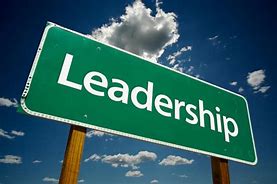We are seeking a high-impact Client Partner based in US prefer NY/NJ or San Francisco to expand our relationships across leading service provider clients, enterprise leaders and key technology ecosystem players in North America.
This role requires a seasoned relationship builder who can confidently engage C-suite leaders, connect client priorities to our clients value, develop compelling commercial value propositions and operate at the intersection of research, advisory, and ecosystem partnership development.
Key Responsibilities
- Grow Wallet Share with Leading Service Provider Clients
- Deepen and expand relationships with senior executives at top-tier service providers.
- Drive revenue growth across research, advisory engagements, and custom programs.
- Provide strategic guidance that helps client leadership teams shape their market positioning, go-to-market strategies, and transformation narratives.
- Serve as a trusted advisor by aligning insights to client priorities across AI, GBS/GCC, IT and Business Services, and industry trends.
- Engage One Council Executives and Identify AI-First Deal Labs & Strategic Opportunities
- Actively engage senior leaders within One Council, strengthening their connection to the enterprise network.
- Identify opportunities for AI-first deal labs, helping clients explore and operationalize AI-driven business and delivery models.
- Translate insight from One Council discussions into meaningful advisory, research, and partnership opportunities.
- Facilitate executive briefings, roundtables, and strategic dialogues that advance enterprise innovation agendas.
- Build New Strategic Relationships with Big Tech Firms
- Establish and grow relationships with major cloud, hyperscale, and AI technology firms.
- Identify collaboration opportunities that reinforce services as software” vision.
- Develop joint narratives, ecosystem programs, and partner engagements that expand strategic relevance across the technology landscape.
- Serve as a connector between big tech, service providers, and enterprise leaders to drive market innovation and insight flow.
Qualifications & Experience
- 15+ years in client leadership, advisory, sales, or ecosystem-facing roles within research firms, service providers, consulting firms, or technology companies.
- Proven ability to build trusted relationships with C-suite and senior executives.
- Strong understanding of enterprise transformation, AI, technology services, cloud, and evolving delivery models.
- Demonstrated success in account expansion and strategic opportunity development.
- Excellent executive communication, storytelling, and facilitation skills.
- Entrepreneurial mindset with the ability to work autonomously and collaboratively in a fast-paced environment.
What Success Looks Like
- Significant growth in revenue and relationship depth across leading service provider clients.
- Strong executive engagement and high-value outcomes generated through One Council.
- Multiple AI-first deal labs launched with strategic clients.
- New and influential relationships with big tech firms that elevate HFS’s ecosystem presence.
- Recognition as a trusted advisor and strategic partner to senior leaders across the services and technology landscape.
Sincerely,
Larry Janis
Managing Partner I Integrated Search Solutions Group
P-516-767-3030









